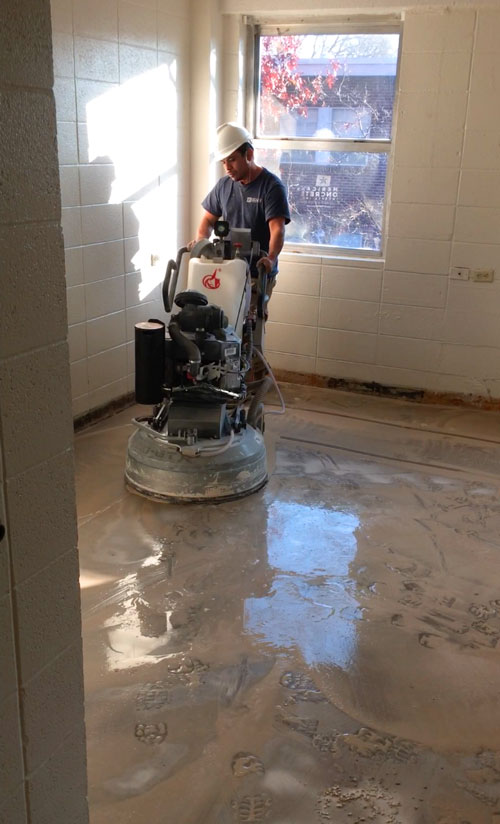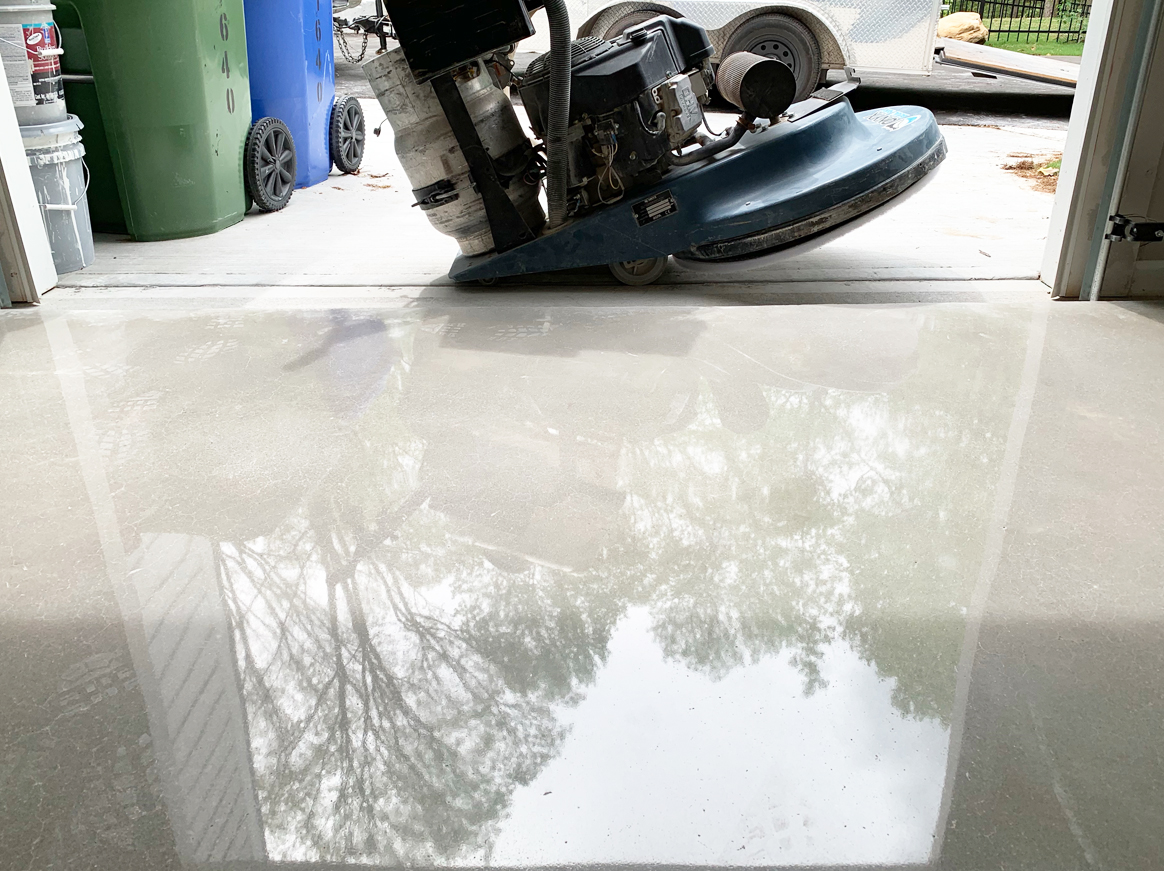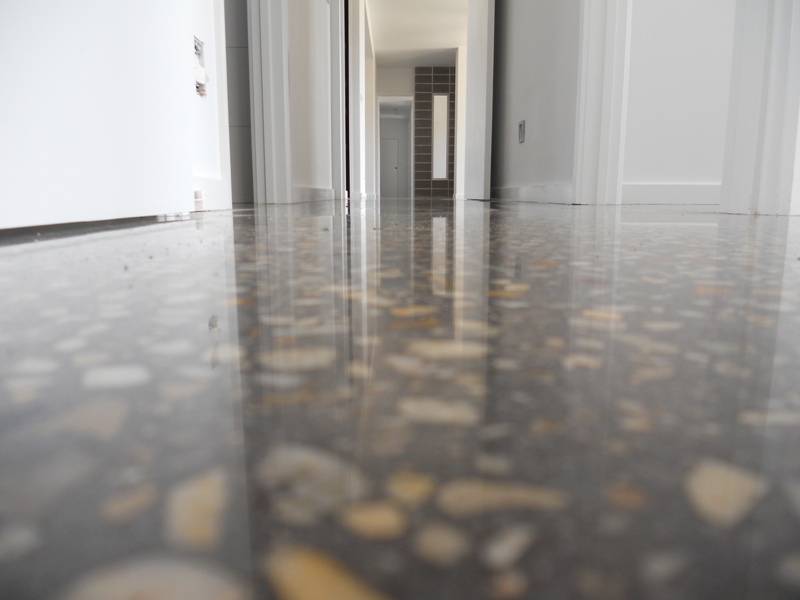Polished Concrete Austin Fundamentals Explained
Table of ContentsThe Main Principles Of Stained Concrete Austin Some Of Polished Concrete AustinSome Known Facts About Polished Concrete Austin.The Ultimate Guide To Polished Concrete Floors Austin Tx


Follow a routine upkeep program, and clean spills and discolorations from the floor as soon as possible. Apply an anti-slip conditioner. These items consist of special ingredients designed to enhance traction and make damp surfaces much safer. They need to be reapplied periodically, but they can simply be mopped on throughout regular cleaning.
These products are merely blended into the sealer prior to using to increase traction without removing from the look of the sleek surface area. Supplement with rubber mats or rug in high-traffic entranceways. Know that the process of polishing concrete floors needs a good deal of competence and making use of specialized sturdy polishing makers equipped with diamond-impregnated disks that slowly grind down surfaces to the desired degree of shine and smoothness.
Polished Concrete Austin Can Be Fun For Anyone

Made up of incredibly fine organic pigments, dyes permeate into concrete surfaces to create translucent color effects. You can utilize dyes alone as a main coloring representative or in conjunction with acid spots or important color as an accent shade. A lot of dyes are compatible with each other and can be combined to create an endless variety of color variations.
Color manufacturers typically suggest applying dye at the grit level just prior to the last polishing action and after that using densifier later. Nevertheless, Bob Harris, author of Bob Harris' Guide to Sleek Concrete Floors, says he has actually had excellent success using dye at the 400-grit phase and after the piece has actually been densified, given that dyes are soluble and will permeate readily.
Although there is no factor to neutralize the flooring after coloring with color, as is required when utilizing acid spots, you need to clean up recurring color from the surface to prevent the color from smearing. Harris recommends using an automobile scrubber fitted with a vacuum healing system for large jobs and a mop or damp vac on smaller projects.
A Biased View of Polished Concrete Austin
Some solvent-based dyes are premixed and come prepared to use, while others are shipped in dry powdered form and require blending with acetone before usage. You can usually thin dyes with extra acetone if you want to minimize the color strength. Know that all solvent-based dyes are highly flammable, so read review precautions ought to browse around this site be taken when applying them.
Likewise make sure the space is well ventilated and no open flames are present. Water-based dyes are generally packaged ready to utilize and need no blending. Harris says that you can use water-based color to polished concrete at the same phase as solvent-based dyes (around 400 grit), but given that these dyes are water soluble, you might require to use the densifier initially, particularly if the concrete is soft, to make the surface less permeable. stained concrete floors austin.
The best way to apply solvent-based dyes is with a pump-up or airless sprayer fitted with an acetone-resistant cone-shaped nozzle to guarantee uniform protection. Because these dyes dry really quickly, prevent using them by brush, which can lead to brush stroke marks. For small locations of information, apply the color with an air brush for the best outcomes. polished concrete austin.
On smooth surfaces, color-washed looks can be attained by ragging or sponging the color on the surface area in a random motion. On open locations, using a pump-up sprayer followed by another person massaging the color into the surface with a microfiber applicator or rayon mop is an effective method of using the color.
10 Easy Facts About Stained Concrete Floors Austin Described
Utilize the protection rate given on the dye container just as a general standard. Layering dye color upon dye color is an excellent method to attain variation and deeper color intensity. Multiple light applications official website of dye will achieve much deeper penetration than one heavy application (decorative concrete austin). Wait a minimum of 15 minutes, or up until the very first application is completely dry, prior to using a 2nd coat of dye.
Constantly use a test sample of color prior to covering the whole flooring so you can see the degree of color strength and how easily the floor is accepting the dye. If possible, carry out the test sample on the real floor in an area that will not be seen, such as in a closet or storeroom.
They may fade if used to outdoor surface areas. Professionals can polish concrete utilizing wet or dry approaches, however usually they use a combination of both. Wet polishing uses water to cool the diamond abrasives and eliminate grinding dust. Due to the fact that the water minimizes friction and acts as a lubricant, it increases the life of the polishing abrasives, especially the resin-bonded disks, which can melt at high temperatures.
Crews should gather and dispose of the slurry that's generated, which slows efficiency. Dry polishing needs no water. Instead, contractors utilize machines geared up with dust-containment systems that remove virtually all of the mess. Generally dry polishing is used for the initial grinding actions, when more concrete is being removed. As the surface area ends up being smoother, and crews change from the metal-bonded to the finer resin-bonded diamond abrasives, they generally change to wet polishing.